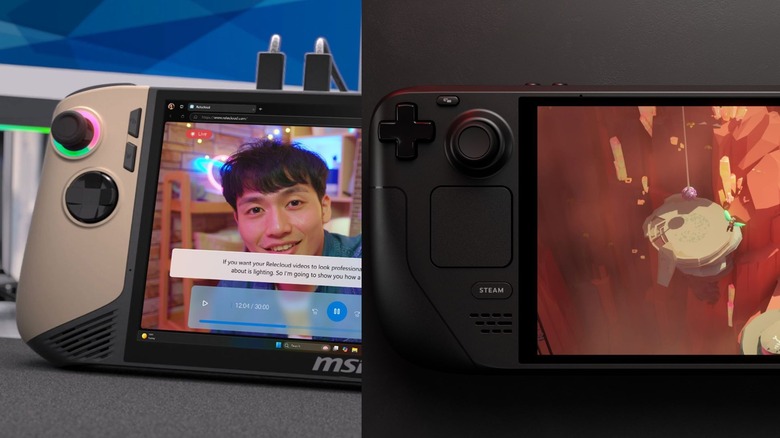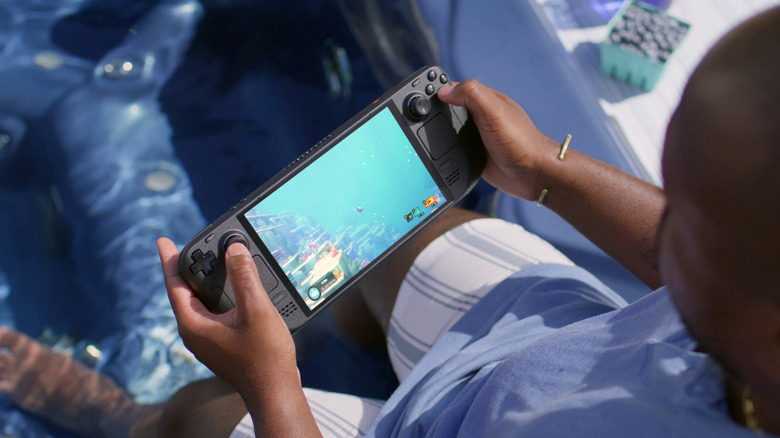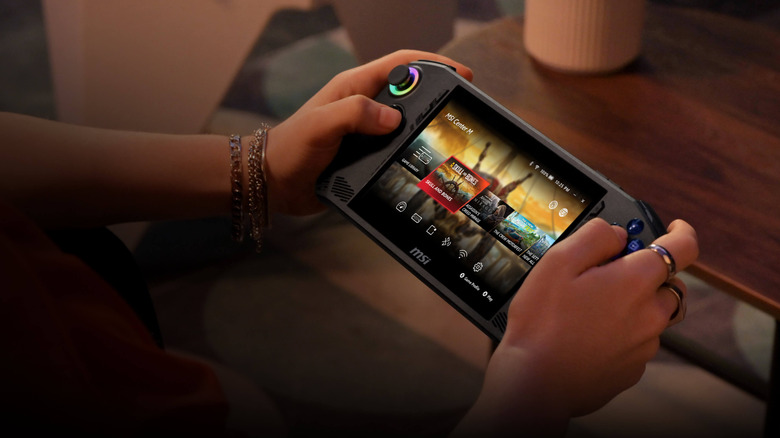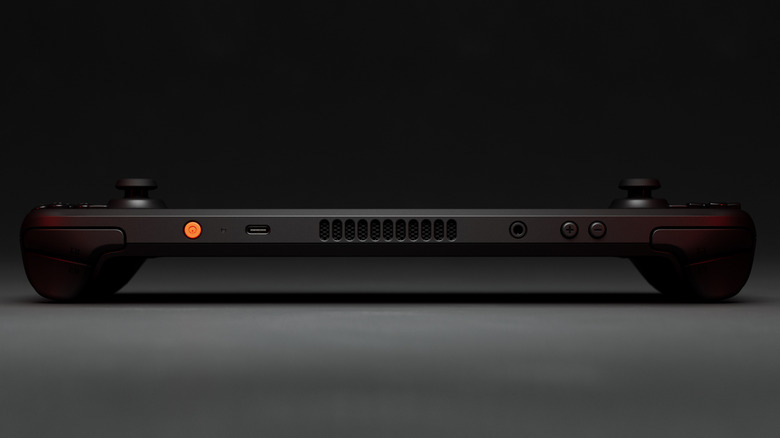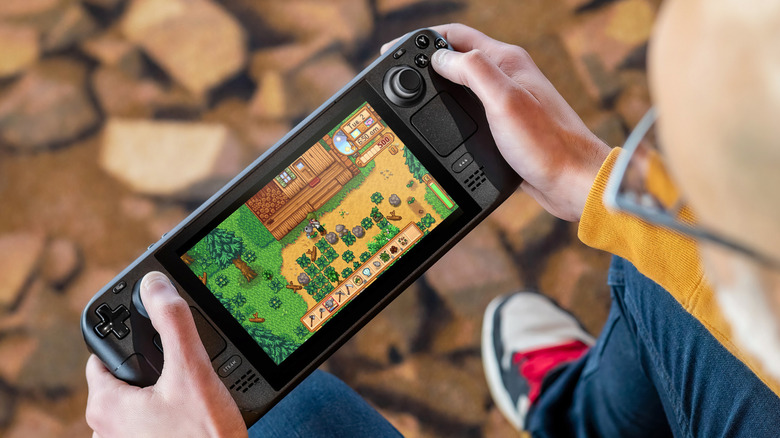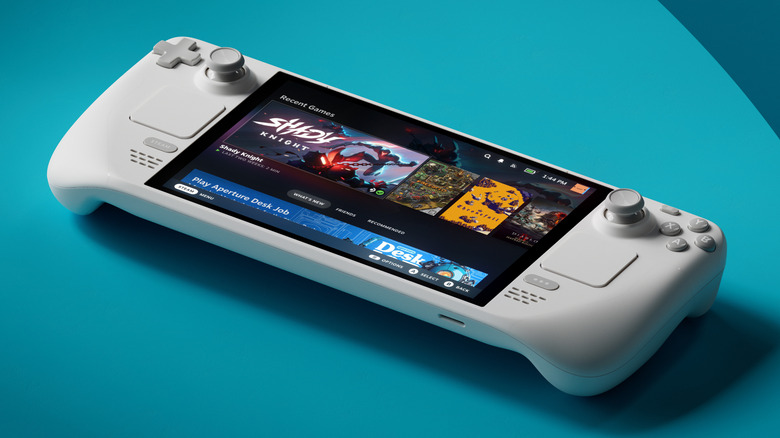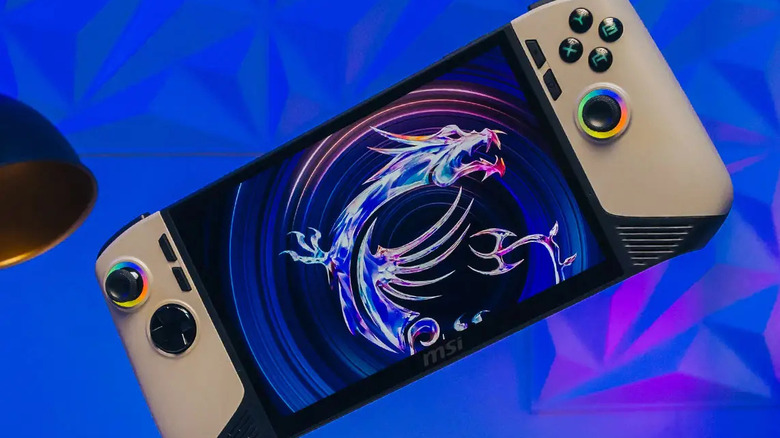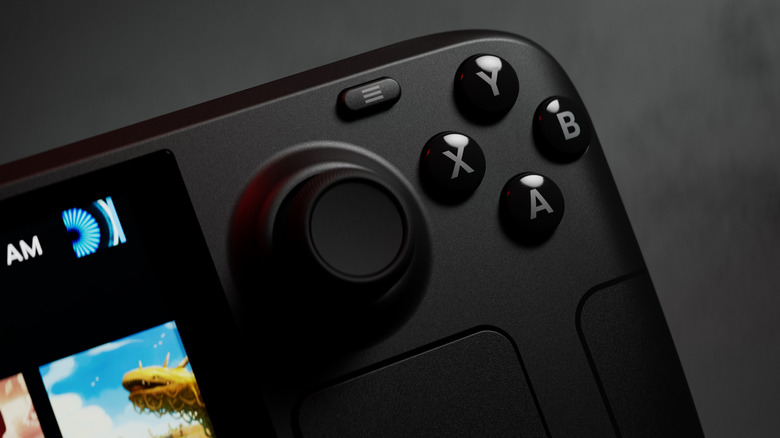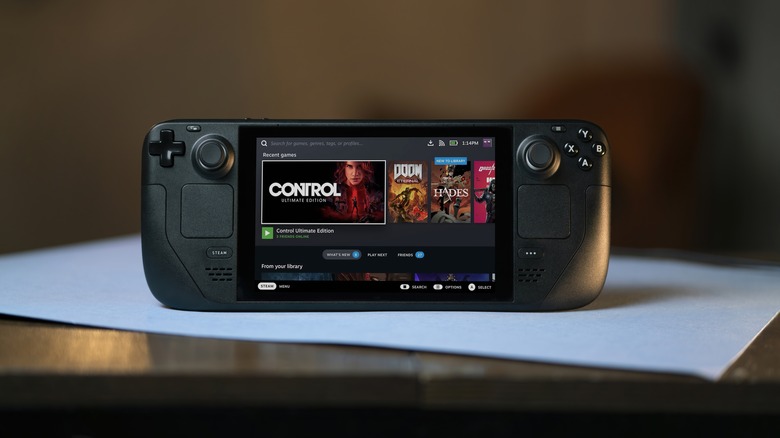Is The MSI Claw A Good Alternative To The Steam Deck?
Handheld gaming was always big but mostly revolved around Nintendo and for some time, Sony handhelds. Valve's Steam Deck made portable PC gaming accessible and easy. Nowadays, every major manufacturer wants a slice of the lucrative handheld gaming pie. Companies like Asus, Razer, MSI, Lenovo, and Acer launched Steam Deck alternatives to varying degrees of success. Despite Steam Deck's popularity, portable gamers have plenty of choices regarding on-the-go gaming hardware.
Valve aims only to update the Deck when it makes sense. The refreshed OLED Deck offers a better screen, bigger SSD, longer battery timings, faster WI-FI 6E, and runs slightly cooler compared to the LCD version. The newer Steam Deck also shrinks the AMD APU to 6nm from 7nm but keeps the performance metrics the same.
I've had plenty of hands-on time with PC handhelds, especially the Steam Deck OLED. I'm also fond of what Asus has done with its second iteration of the ROG Ally handheld. While initially, MSI Claw failed to impress, the second version of the Claw is looking to compete with the best. With the recently released MSI Claw refresh, we look at how well the original and new MSI Claw holds up to the Steam Decks.
What is a Steam Deck?
The Steam Deck is a portable gaming PC made by Valve, the same company behind the Steam storefront. Valve also makes popular video games like "DOTA 2," "Counter-Strike," and "Half-Life." The unified handheld PC offers a screen, controls, and speakers in a single unit. Think Nintendo Switch, but for PC gaming. The Steam Deck runs on SteamOS, a specialized Linux-based operating system that runs Windows games in a console-like environment. It's a streamlined OS dedicated to making the PC gaming experience as smooth as possible. Valve's handheld makes it extremely easy to transition from PC gaming to gaming consoles, offering a similar easy-to-understand interface.
If you already have a healthy game library on Steam, you can easily play most of the titles on the Steam Deck. The only downside is restrictive online play in certain games that require Windows. While players can dual boot Windows and Steam OS or install Windows on the Steam Deck, this decreases battery performance. Windows is not officially supported by Steam Deck and might require a full SSD wipe. In short, Windows isn't an optimal way of using a Steam Deck.
The Steam Deck has two variants: The older LCD screen model and the newer OLED one. Valve has phased out the lower 64 GB storage LCD variant but still offers the 256 GB with an LCD screen. The 512 GB and 1TB models are fitted with an OLED screen. Internally, both LCD and OLED variants have the same APU and specs, so users can expect almost identical levels of gaming performance.
What is an MSI Claw?
MSI, a Taiwanese company, makes laptops, motherboards, and monitors and has a long history of making PC hardware. While most other handhelds use AMD APUs, the MSI Claw is an Intel-powered machine featuring Meteor Lake-based Intel Core Ultra internals. Console-like controls flank the 7-inch LCD IPS screen. Unlike the Steam Deck, the MSI Claw doesn't feature trackpads; it has a full touch screen with Xbox controller buttons on the front.
The MSI Claw is a Windows 11-based gaming handheld. The device comes with Windows pre-installed and ready to go. Being a Windows device, the MSI Claw can run almost any game released on the PC. While games like "Destiny 2" and "Grand Theft Auto Online" won't work on the Steam Deck, they'll at least boot on the Claw.
The original MSI Claw with Meteor Lake Intel processors was criticized for its less-than-satisfactory performance and battery timings. MSI refreshed the Claw line with improved internals and a bigger battery. The Claw line up includes Initial Claw A1M released in early 2024, the refreshed 7 AI+ and 8 AI+ in late 2024. The new Claws improve upon the original with a bigger battery, higher-resolution display, a better and efficient processor and improved thermals. Industry impressions are positive, with performance and battery benchmarks showing marked improvement over the original Claw. The refresh garnered positive reviews, with PC Gamer's Andy Edser praising Claw's battery life in his review.
Steam Deck and MSI Claw internal hardware comparison
On the inside, Steam Deck runs on a custom AMD Zen 2 APU with four cores, eight threads, and up to 3.5 GHz boost. The LCD Deck has 16GB of LPDDR5 RAM at 5500 MT/s and a total bandwidth of 88 GB/s. The OLED bumps it to 6,400 MT/s at 102.4 GB/s bandwidth. The handheld has either 256GB, 512GB, or 1TB storage, along a microSD card slot. The 256GB LCD version has WiFi-5, while the OLED variants come with Wi-Fi 6E.
The MSI Claw chose Intel Core Ultra 5-135H and Intel Core Ultra 7-155H processors. It uses the Intel Arc IGP. The Claw has 16GB LPDDR5 at 6400 MHz. The MSI claw provides 512GB and 1TB SSD storage. An addition that puts the Claw ahead of the competition is the inclusion of Wi-Fi 7, which is around four times faster than Wi-Fi 6 and 6E. MSI's new Claw 8 AI+ and Claw 7 AI+ launched with Intel Core Ultra 7 Series 2 processors. The new Claw also has 32GB of RAM and up to 1TB of NVMe SSD storage. The bigger Claw comes with Wi-Fi 7; the smaller settles for Wi-Fi 6E.
The MSI Claw A1M scores poorly in video game benchmarks, with most scoring lower than the much cheaper Steam Deck. GamerNexus, a reputable outlet, pointed out MSI Claw A1M's frame pacing issues that make videogames stutter. The new Claw 7 and 8 seemingly don't have the same performance issues.
Steam Deck and MSI Claw performance comparison
Steam Deck's performance is well documented; professional and user benchmarks are readily available. Despite the somewhat aging internal hardware, Steam Deck holds up well in various games. While running newer AAA games might be hard for the Deck, it generally fares well at 720p and 30 FPS in new titles. The Steam Deck is perfect for older or smaller indie games, frequently running them above 60 FPS and giving a respectable run time.
On paper, the MSI Claw had capable internal hardware. Unfortunately, the specs don't translate into real-world performance. Despite the good specs, the MSI Claw scores poorly in video games and benchmarks, most scoring lower than the much cheaper Steam Deck. The Claw's nearest competitor, both in design and price, is the Asus ROG Ally. The ROG Ally also fares better in gameplay than the Claw, making it the better recommendation.
MSI rectified the performance issue with the new Claw 8 AI+ and Claw 7 AI+, which are much better than the original. The full 30-watt power mode can give solid frame rates at the native 1,080p resolution. Even modern titles can hit around 30 FPS on the Claw 8 AI+. A laptop would give better performance if portability isn't a big concern.
Steam Deck and MSI Claw display comparison
The original Steam Deck shipped with a decent 1,280 x 800 resolution 7-inch LCD. The new OLED model has a slightly bigger 7.4-inch HDR OLED display. The new screen makes everything pop on the screen with brighter colors and deeper blacks. The LCD model can hit 400 nits of brightness, but the OLED panel has 1,000 nits peak brightness, making it easier to see outside or during commute. While the older Steam Deck only had a 60 Hz refresh rate, the new one bumps it to 90 Hz while keeping the same 16:10 aspect ratio. The higher the refresh rate, the smoother the games run. Unfortunately, even the Steam Deck OLED doesn't have a variable refresh rate screen, so any frame rate fluctuations will be more prominent.
The MSI Claw opts for a full HD 1,920 x 1,080 resolution screens with a more standard 16:9 aspect ratio. The 7-inch screen is IPS and has a higher 120 Hz refresh rate. MSI Claw one-ups Steam Deck with its 48-120 HZ VRR. Games will look smoother and be more responsive on the Claw. The new Claw 8 AI+ has an 8-inch display with 1,920 x 1,200 resolution. The touchscreen has VVR, 500 nits brightness, and a high 120 Hz refresh rate. The Claw 7 AI+ has a smaller 7-inch display with the exact specifications. Apart from lacking the punchy OLED screen, MSI Claw ticks all boxes for smooth gameplay.
Steam Deck and MSI Claw battery performance
The Steam Deck uses a 5,300 mAh battery at 7.7 V. Depending on the workload, the 40-watt-hours battery can run between two and eight hours. My Steam Deck LCD lasts around five hours when playing light indie games like "Brotato" or "Balatro." More demanding titles like "Cyberpunk 2077" drain it faster, only netting around 1.5 hours of playtime. The Steam Deck OLED fairs better and sometimes lasts twice as long as the LCD model. The OLED screen combined with a new, small, more power-efficient chip does wonders for the OLED Deck.
The original MSI Claw ships with a 53Wh battery capacity, which can run two to six hours, depending on the game. Sean Hollister from The Verge found the MSI Claw's battery performance lacking, with the device only lasting 1.5 hours while playing Shadow of the Tomb Raider. The newly refreshed Claw 7 and Claw 8 come with 54.5Wh and 80Wh batteries, respectively. MSI Claw 8 AI+ generally runs for 2.5 hours in 30-watt power mode.
The MSI Claw A1M has the worst battery, followed by Steam Deck LCD. Both the Steam Deck OLED and MSI Claw refresh have superb battery timings. If you need a handheld that lasts a couple of hours while playing games, we recommend the new Claws or Steam Deck OLED.
MSI Claw and Steam Deck software comparison
The Steam Deck runs on a custom Linux OS explicitly designed for Steam machines and Steam Deck. Despite being Linux-based, the OS can run Windows games well, often yielding similar performance. The UI is smooth, intuitive, and well-polished. The community-driven controls and customizations are convenient, making any game run as well as it can on the handheld. The downside is that some games that require Windows won't work on the Steam Deck. Games that use kernel-level anti-cheats, like "Call of Duty" or "Destiny 2," won't run on the Steam Deck. Similarly, Microsoft's Game Pass also can't natively run on the portable machine.
The MSI Claw comes with Windows 11, and apart from scaling issues, it runs the OS well. As it's a Windows machine, you can install anything on it. Any video game launcher works flawlessly on the device. Ubisoft, EA, and many other publishers run their stores with launchers, and players can directly install and run those, too. You won't be limited to just Steam on the MSI Claw. The Claw has a custom video game launcher installed, giving a "console-like" interface. It's an average addition that needs more time in the developer oven to become something gamers would love to use.
MSI Claw and Steam Deck price compared
The Steam Deck LCD costs $449, while the 512 GB and 1 TB OLED models go for $549 and $649, respectively. Valve also sells refurbished Steam Decks at a discount, which I recommend. The refurbished units are in excellent condition, with minor scratches on the shell. The 512 GB and 1 TB MSI Claws retailed for $699 and $749, a steep price for the hardware.
The newer Claw 7 costs $799, and the bigger Claw 8 is going for $899, it's among the most expensive MSI gaming products available today. If you are in the market for a Claw, I recommend going with the newer Claw 7 and 8. While they are priced higher than the Steam Deck, they offer more performance and run on Windows. A laptop will be bigger, have better battery life, and perform better for roughly the same price as the MSI Claw 8 AI+.
How we tested the handheld PCs
The Steam Deck LCD and then the OLED model are my daily PC handhelds. I've played thousands of hours of video games on Valve's well-designed machines. From demanding titles like "Red Dead Redemption 2" to slower, less intensive games like "Stardew Valley," I have logged in plenty of time on the Decks. I've also tested the original MSI Claw A1M but for a very brief time.
The benchmarks, facts, and figures were collected from Slashgear reviews and trusted industry outlets. We also consulted user reviews, forum posts, and Reddit to learn more about the PC handhelds. We double-checked opinions stated in negative reviews to make sure we didn't miss anything important.
If you are looking to play casual, indie, or older titles, the Steam Deck would be more than enough for your gaming needs. However, the MSI Claw 8 AI+ can provide slightly better performance in newer titles. It won't be a smooth 60 FPS experience, though. I recommend getting a gaming laptop for that price if portability isn't a concern.
